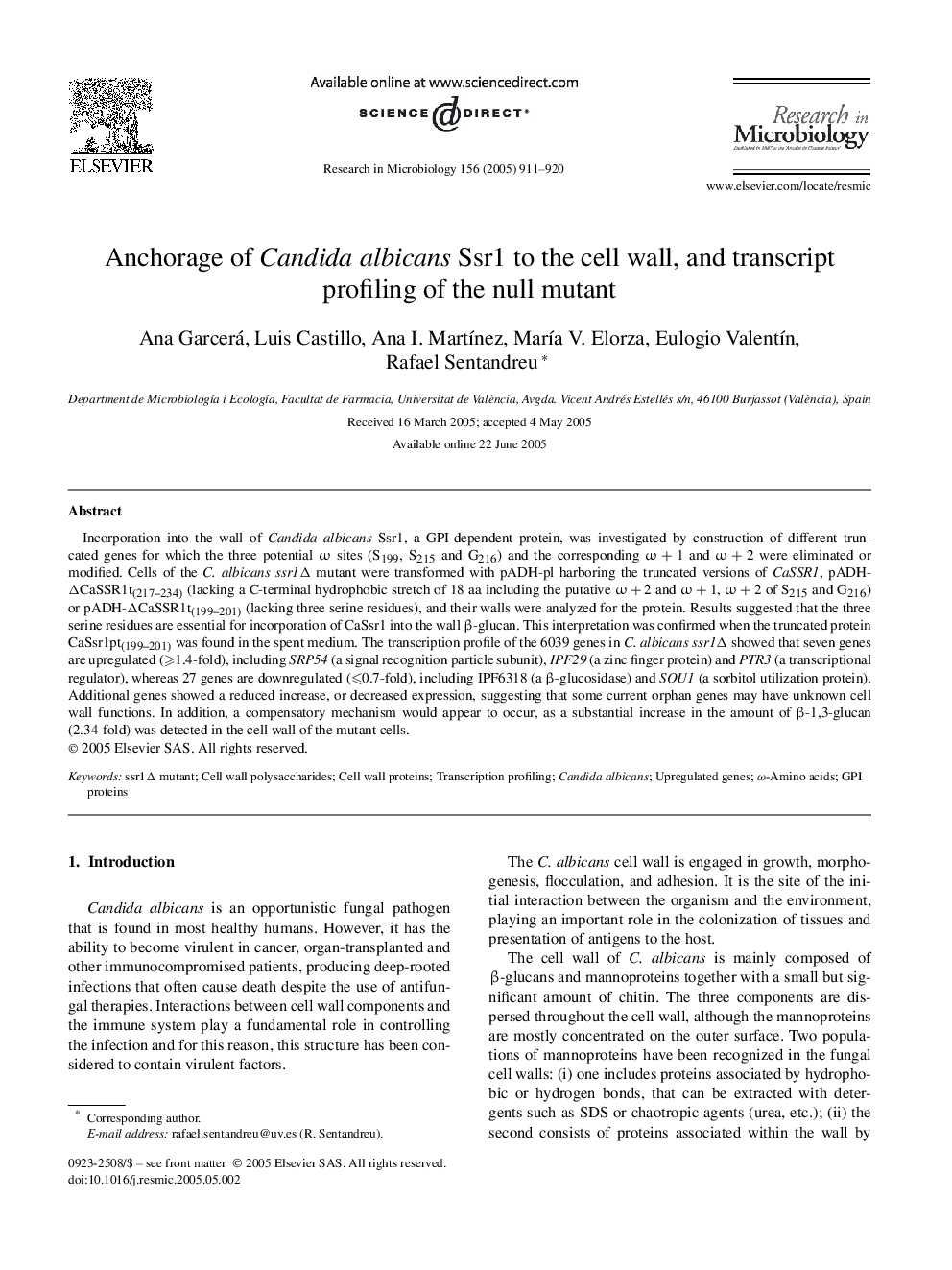| Article ID | Journal | Published Year | Pages | File Type |
|---|---|---|---|---|
| 9439848 | Research in Microbiology | 2005 | 10 Pages |
Abstract
Incorporation into the wall of Candida albicans Ssr1, a GPI-dependent protein, was investigated by construction of different truncated genes for which the three potential Ï sites (S199, S215 and G216) and the corresponding Ï+1 and Ï+2 were eliminated or modified. Cells of the C. albicans ssr1Î mutant were transformed with pADH-pl harboring the truncated versions of CaSSR1, pADH-ÎCaSSR1t(217-234) (lacking a C-terminal hydrophobic stretch of 18 aa including the putative Ï+2 and Ï+1, Ï+2 of S215 and G216) or pADH-ÎCaSSR1t(199-201) (lacking three serine residues), and their walls were analyzed for the protein. Results suggested that the three serine residues are essential for incorporation of CaSsr1 into the wall β-glucan. This interpretation was confirmed when the truncated protein CaSsr1pt(199-201) was found in the spent medium. The transcription profile of the 6039 genes in C. albicans ssr1Î showed that seven genes are upregulated (⩾1.4-fold), including SRP54 (a signal recognition particle subunit), IPF29 (a zinc finger protein) and PTR3 (a transcriptional regulator), whereas 27 genes are downregulated (⩽0.7-fold), including IPF6318 (a β-glucosidase) and SOU1 (a sorbitol utilization protein). Additional genes showed a reduced increase, or decreased expression, suggesting that some current orphan genes may have unknown cell wall functions. In addition, a compensatory mechanism would appear to occur, as a substantial increase in the amount of β-1,3-glucan (2.34-fold) was detected in the cell wall of the mutant cells.
Keywords
Related Topics
Life Sciences
Immunology and Microbiology
Applied Microbiology and Biotechnology
Authors
Ana Garcerá, Luis Castillo, Ana I. MartÃnez, MarÃa V. Elorza, Eulogio ValentÃn, Rafael Sentandreu,
